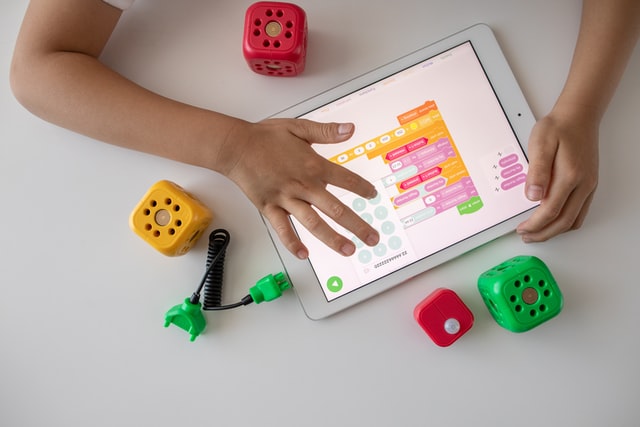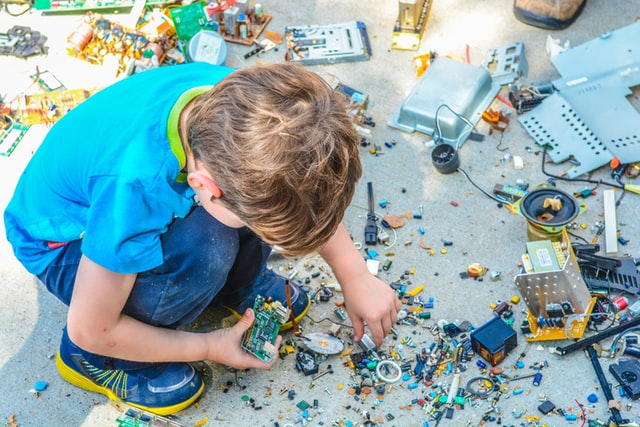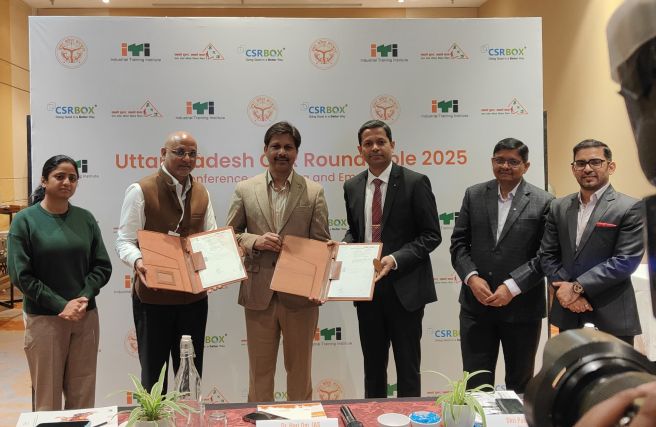
The STEAM education program (short for Science, Technology, Engineering, Arts, and Mathematics) helps students develop new problem-solving skills. It’s expected that STEM occupations will grow 10.8% between 2021 and 2031. This is more than double for non-STEM-related careers.
Homeschool science is particularly important to teach in high school. This program is often used as part of the school curriculum, but there are also ways you can teach the various aspects of STEAM at home using some common household items. Check out this guide offering some fun STEAM activities to do at home. You can use these activities as part of your home-schooling program or supplement whatever your child is already learning at school. From science and technology to math and engineering, it’s a great way to keep kids engaged and interested as they learn and develop new skills.
Why is STEAM Important?
The STEAM program is important for a variety of reasons, and it offers children a range of crucial benefits, like:
- Encouraging kids to delve deeper into finding answers to thought-provoking questions
- Shows children how to make smart and thoughtful risks
- Kids will engage in much more meaningful and involved learning activities
- With STEAM, students can become resilient problem solvers
- Many activities require teamwork, which helps children appreciate the value of collaborating with others
- STEAM helps kids work through the creative process to develop new solutions to problems
Participating in STEAM activities will help kids develop new skills and learn more about the world. While many of these activities are done inside the classroom, you can also do some of them at home. In fact, many of these activities can be done using everyday household items. There are many kid activities resources out there to entertain your kids, but these will help them evolve their skills. Let’s take a closer look at some examples of these activities within each of the different sectors of the STEAM educational curriculum.
The future of STEAM
The benefit STEAM brings to businesses and future career opportunities is another reason to introduce kids to it from a young age. STEAM provides businesses with the opportunity to drive innovation, solve complex problems and help them stay competitive in their industry. Furthermore, businesses incorporating STEAM principles are more likely to develop cutting-edge products, foster creativity and optimize productivity.
Science Activities
Here are some science activities for kids to try at home to help expand their horizons.
Dry ice balloon: This fun, simple activity teaches students about carbon dioxide. You’ll need several colorful balloons and some dry ice for this activity. Simply open the balloon’s mouth and place a small amount of dry ice inside. Tie off the balloon, sit back, and watch it inflate as you discuss how the carbon dioxide produced by the dry ice forms a gas due to atmospheric pressure.
Expanding soap souffle: Take a bar of Ivory soap and put it on a microwave-safe plate. Place the plate and soap in the microwave and heat it on the high setting for about one to two minutes as you watch it slowly expand and turn into a fluffy mass. This science activity demonstrates how the air bubbles and water molecules in the soap expand when exposed to high levels of heat.
Nature goop: Kids of all ages love slime, so this science activity is great for any grade level. All you’ll need is some cornstarch, water, and a few items you collect from nature. Add your organic items like small twigs, leaves, and flowers to the water-cornstarch mixture, and watch as your goop forms. This is a great sensory activity while incorporating some elements from the natural world into the experiment.
Balloon Inflation: Grab an empty bottle, mix 2 tablespoons of yeast, 1 tablespoon of sugar, and 2-3 tablespoons of lukewarm water. Use a funnel to add the mix to the bottle and stretch a balloon over the mouth of the bottle. Be patient and watch how the mix starts to create bubbles inside the mix. The balloon will start inflating by itself, thanks to the microscopic fungus that converts sugar into carbon monoxide.
Technology Activities
There is a wide range of technology activities that help kids in their STEAM education from the comfort of their homes, such as drone learning. Here are some technology activities explained for kids that you can try at home:
Pumpkin clock: You’ve probably heard of the potato clock, but did you know you can also make one with pumpkins? Take two small to medium-sized pumpkins and use a potato clock kit to make it work. Just make two small slits on the top of each pumpkin and insert the wires inside as you wait for the clock to turn on. Particles inside of the pumpkins convert the chemical elements they contain into electrical energy to power the clock and make it run.
Photography challenge: Challenge your child to take digital photos of one particular subject. For example, It can be anything that is the color red, or it can be photos that represent a specific number. Once your child has lots of photos, spend some time uploading them and looking at them together. This is also an excellent opportunity to teach students to edit their pictures using several different photo editing programs.
Coding for kids: You may think that coding is just for adults, but it’s an important skill that can help kids early in life. Look for online coding programs and curriculum that will teach your student about the basics of coding language. As they progress, you can start practicing coding to see what they come up with on their own. Since there are a lot of free coding resources for kids on the internet, so it’s not difficult to get started.
Engineering Activities
The realm of engineering is essential for kids to learn. Here are some fun and engaging engineering activities for kids to try.
Building blocks: Although it may seem simple, building blocks like LEGOs are a perfect engineering learning tool. Ask your child to build a flag out of LEGOs or make a building to teach them how these structures are built and how they are able to stand. Get creative and come up with a few challenges for your child so they can build a variety of items as they walk through the process of engineering and how it works.
Snack pulley: This simple engineering experiment can be done with items you have at home. You’ll need some empty paper towel tubes, straws, three empty ribbon spools, some string, and a few small snacks like crackers or a piece of fruit. Cut the paper towel tubes to different lengths and attach the ribbon tool to the top, using the string to keep it in place. Connect all three tubes utilizing this method, then secure everything to the table using some masking tape. Once the pulley is complete, fill a lightweight plastic cup with the snacks, attach it to one end, and pull it to the other side using your homemade pulley to observe engineering at work.
Marble run: Have your child make their very own “marble run” using some empty toilet paper or paper towel tubes and some masking or painter’s tape. They can design their own run to go across the floor, attach it to a door, or mount it to the window. Once the run is constructed, place some marbles in it and watch them move from one end of the run to the other.
Art Activities
Steam used to be known as STEM until the arts were added, so what was once STEM activities for kids are now STEAM activities for kids. The arts are a favorite subject for many kids, so give these fun and easy art activities for kids a try using everyday household items.
Bubble paintings: Add some food coloring to a bottle of bubbles and have your child blow the bubbles onto a piece of sketch paper, canvas, or construction paper. When the bubbles hit the paper, they’ll pop and create beautiful colorful art designs. Be sure to make several different bottles using various colors so students can get creative with their bubble painting.
Fizzy baking soda paint: The famous volcano with baking soda and vinegar is a timeless science experiment. You can also use this combination to make some pretty awesome art. Just pour some baking soda into a small bowl and add food coloring or egg dye to create your paint colors. Have your child make a painting using the mixture, then spray some vinegar on it as they watch their painting fizz and bubble on the paper.
Shadow drawings: This fun art activity teaches kids how to trace and draw. Sit near a sunny window and place an object nearby until it casts a shadow onto the paper. Once the shadow is in place, have your child trace and sketch it to create their own unique drawings. You can use shadows of toy figures, your child’s hand, or anything else that will cast a distinctive shadow for tracing.
Pro tip – Use tech for art: Buy the best drawing tablet for your kid and look for art apps. There are many apps that offer multiple ways of creating art and showcasing it. Digital art is always a good way to start since it offers tools that can be easily used to explore brushes, infinite colors, and multiple layers to work with. This is also good for them since mistakes can be easily undone, and there’s no mess left behind after a good digital art session.
Mathematic Activities
Make learning math fun with these awesome mathematical activities for kids.
Domino number match-up: Write the numbers 1-12 in black marker on individual Post-it notes or small pieces of paper and line them up on the floor in order. Once you’re done, have your child match the numbers on the paper with individual dominos. This is a great way to teach young students how to count and learn their numbers in a fun and engaging way.
Dice multiplication game: Take two dice and have your child toss them onto the floor, then multiply the two numbers that the dice land on together. Every time they get the answer right, they receive a point. You can play against each other to see who gets the most points first or set a limit to decide how many answers they need to get right in order to complete the game. This is an excellent way to teach and practice multiplication using simple things you should already have at home.
Oreo fractions: Take some Oreo or other sandwich cookies and remove the top half. Place several cookies on a piece of paper and make a grid representing different fractions. Remove a part of the cream filling to display the different fractions so that they resemble a pie chart. This is a terrific way to visualize fractions tangibly. The best part is that you get to eat the cookies when the lesson is done.
Creating a conducive learning environment for kids involved ensuring safety while engaging in STEAM activities. Parents should supervise their children and carefully read instructions before starting any experiment or project. Here are some safety tips
- Wear protective gear (e.g., gloves or safety goggles) when handling potentially hazardous materials.
- Have a first-aid kit ready
- Make sure all equipment is in good working condition
- Remove all obstacles
- Work in a well-ventilated room
Whether it’s technology and engineering or science and math, STEAM is a wonderful way to teach students about important skills. While schools are teaching the STEM program more and more, there are also ways to implement the program at home, using online materials such as a K12 LMS, household items, and online programs. Try some of these easy and fun activities that you can try at home with your child today. With some simple household items, you can engage your child and inspire them to learn more about the world in a meaningful way that will last a lifetime.













